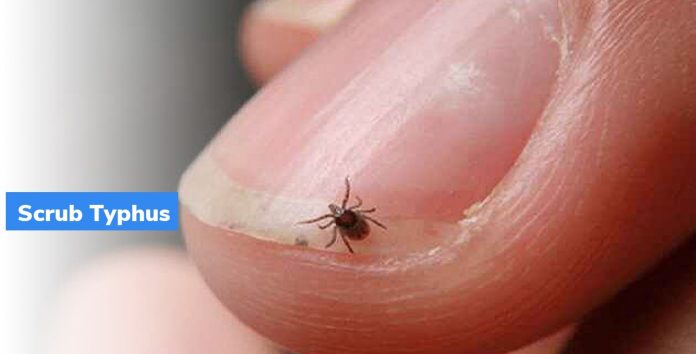ZHEJIANG, China – A patient hailing from Bihu Town in Liandu District, (the central urban area of Lishui city in Zhejiang Province), recently sought medical treatment at the city’s central hospital after enduring a persistently high fever. Despite having taken antipyretic medication and undergoing saline treatment at a local clinic for over a week, the patient’s condition showed no improvement.

Upon admission, the patient’s body temperature exceeded 40°C, resulting in extreme exhaustion and a significantly deteriorated physical state, according to Dr. Jiang Xiangwei, an infectious disease specialist at the hospital. An examination revealed the presence of eschar on the patient’s right arm, accompanied by a widespread red rash throughout the body. Subsequent blood tests confirmed a diagnosis of scrub typhus. An alarming surge in cases has seen nearly 10 individuals diagnosed within the same area.

The patient, (identified only as Mr. Zhang), frequently engaged in outdoor labour activities and regularly fell victim to mosquito and insect bites; given his overall good health however, he usually paid little attention to them. The severity of his situation came as an unexpected shock to him, considering the seemingly negligible size of the creature responsible for the bite. After receiving appropriate treatment, Mr. Zhang has since recovered and has been discharged from the hospital.
Scrub typhus is a potentially fatal infectious disease and remains a concern during the high-risk season, (the season of scrub typhus in China is from May to November south of the Yangtze River and from October to November north of the Yangtze River). Health officials urge individuals undertaking outdoor activities to exercise caution and take necessary precautions to minimize the risk of contracting the disease.
What is scrub typhus?
Scrub typhus is a serious public health problem in the Asia-Pacific area. It threatens one billion people globally and causes illness in one million people each year. Without appropriate treatment, the case fatality rate of scrub typhus can reach 30% or even higher
Scrub typhus, also known as tsutsugamushi disease, is an acute infectious disease caused by the bacterium Orientia tsutsugamushi. It is a zoonotic disease which usually infects wild rodents. The disease is transmitted to humans through the bites of infected chigger mite larvae.
Scrub typhus is characterized by a range of symptoms, including fever, skin rash, and enlargement of the liver and spleen. In more severe cases, it can lead to multiple organ failure and, if left untreated, can be fatal. The disease is endemic in certain regions, particularly in rural areas of Asia and the Pacific Islands. Adequate prevention measures, such as wearing protective clothing and using insect repellents, can help reduce the risk of transmission.
Antibiotics for the treatment of scrub typhus didn’t become available until the 1940s. The development and introduction of antibiotics such as tetracycline and chloramphenicol, played a crucial role in the effective management of scrub typhus by targeting the Orientia tsutsugamushi bacterium.

What are the Signs and Symptoms of Scrub Typhus?
Chiggers are tiny mites that live outdoors in grassy or wooded areas near water, they thrive in warm temperatures. Chigger bites cause itching at the site of the bite, commonly near the seams of tight-fitting clothing.

Most chigger bites occur around the ankles, waist, armpits, crotch, or behind the knees. According to online sources, you won’t feel it when the chigger latches on, and you probably won’t feel a thing when it bites.
Symptoms of scrub typhus usually begin within 10 days of being bitten. Signs and symptoms may include:
Fever and chills
Headache
Body aches and muscle pain
A dark, scab-like region at the site of the chigger bite (also known as eschar)
Mental changes, ranging from confusion to coma
Enlarged lymph nodes
Rash
People with severe illness may develop organ failure and bleeding, which can be fatal if left untreated.
Diagnosis and Testing of Scrub Typhus
The symptoms of scrub typhus are similar to symptoms of many other diseases and can sometimes be misdiagnosed. It is important to see your healthcare provider if you develop the symptoms listed above after spending time in rural, grassy or wooded areas.
Your doctor may order blood tests to look for scrub typhus or other diseases.
Laboratory testing and reporting of results can take several weeks, so your doctor may start treatment before results are available.
What Treatment is Available for Scrub Typhus
Currently, Scrub typhus is usually treated with the antibiotic doxycycline, which can be used in persons of any age.
Antibiotics are most effective if given soon after symptoms begin and people who are treated early with doxycycline usually recover quickly.
Related article: Do not crush the Paederus (Rove Beetle)








